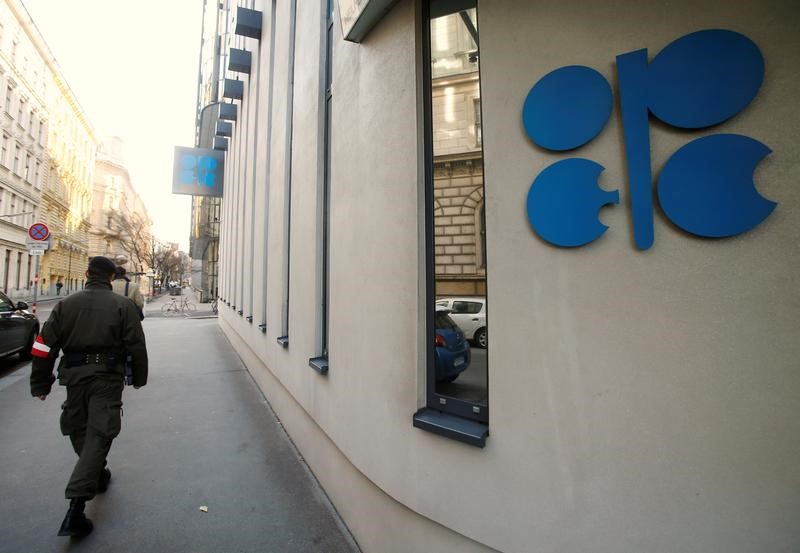By Alex Lawler
LONDON (Reuters) -OPEC on Monday cut its forecast for global oil demand growth in 2024 citing softer expectations for China, a reduction that highlights the dilemma faced by the wider OPEC+ group in raising production from October.
This is the first cut in OPEC’s 2024 forecast since it was made in July 2023, and comes after mounting signs that demand in China has lagged expectations due to slumping diesel consumption and as a crisis in the property sector hampers the economy.
In a monthly report on Monday, the Organization of the Petroleum Exporting Countries said world oil demand will rise by 2.11 million barrels per day in 2024, down from growth of 2.25 million bpd expected last month.
There is a wide split in 2024 demand growth forecasts due to differences over China and the pace of the world’s transition to cleaner fuels. OPEC is still at the top of industry estimates and has a long way to go to match the International Energy Agency’s far lower view.
“This slight revision reflects actual data received for the first quarter of 2024 and in some cases for the second quarter, as well as softening expectations for China’s oil demand growth in 2024,” OPEC said in the report.
OPEC said this year’s demand growth was still above the historical average of 1.4 million bpd seen prior to the COVID-19 pandemic in 2019, which caused a plunge in oil use, and that summer travel demand would remain robust.
“Despite the slow start to the summer driving season compared to the previous year, transport fuel demand is expected to remain solid due to healthy road and air mobility.”
In the report, OPEC also cut next year’s demand growth estimate to 1.78 million bpd from 1.85 million bpd previously, also at the top end of what the industry expects.
Oil last week touched the lowest price this year near $75 a barrel on concerns about Chinese demand and a possible U.S. recession. Prices were steady after the report was released, trading above $80.
JULY PRODUCTION UP
OPEC+, which groups OPEC and allies such as Russia, has implemented a series of output cuts since late 2022 to support the market, most of which are in place until the end of 2025.
On Aug. 1, OPEC+ confirmed a plan to start unwinding the most recent layer of cuts of 2.2 million bpd from October, with the caveat that it could be paused or reversed if needed.
The group still has a month to decide whether to start releasing the oil from October, and will study oil market data in the coming weeks, a source close to OPEC+ said last week.
OPEC’s report showed that actual production is increasing nonetheless, with OPEC+ pumping 40.9 million bpd in July, up 117,000 bpd from June, led by an increase from Saudi Arabia.
The OPEC report projects demand for OPEC+ crude, or crude from OPEC plus the allied countries working with it, at 43.8 million bpd in the fourth quarter, in theory allowing room for higher production by the group.
Still, other forecasts give less room. The IEA, which represents industrialised countries, sees much lower demand growth than OPEC of 970,000 bpd in 2024. The IEA is scheduled to update its figures on Tuesday.
Read the full article here















